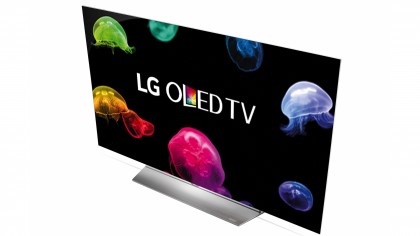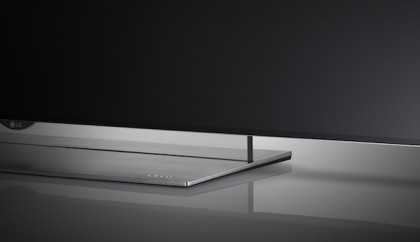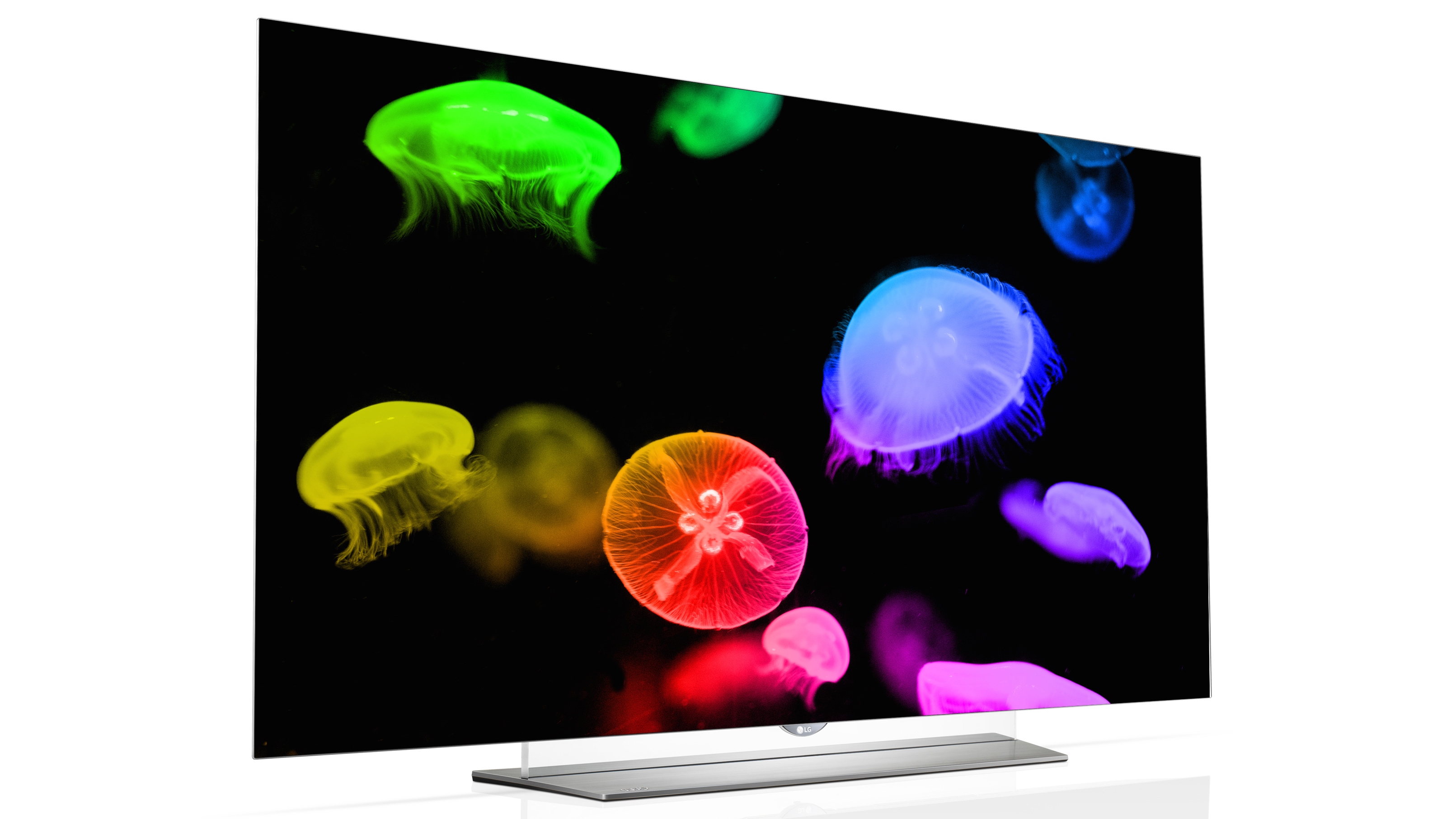Why you can trust TechRadar
While LCD screens have made some seriously huge strides in 2015, within mere moments of starting to watch the 65EF950V you're reminded of just why there's always been so much buzz around OLED technology.
As is immediately obvious if you watch anything with a wide contrast range, the ability of OLED to render a pure white pixel right next to a more or less completely black one leads to pictures of jaw-dropping dynamism.
This applies to transitions from dark to bright shots and vice versa, as well as to the combination of bright, colourful image elements and pitch black elements within the same frame.
Regarding the latter OLED talent, the luminous quality of small bright points in mostly dark images is like nothing you'll see on any other type of TV. Stars in a night sky, lit windows in a silhouetted building, the glint in people's eyes, sun reflecting off metal in outer space, torches in a dark forest… All such image elements - many of which are, of course, staples of Hollywood movies - enjoy an intensity and and luminosity that just isn't possible with any of the current LCD screen technologies.
Self emission rules
This isn't surprising given that LCD technology has to share external light sources across large groups of pixels or even the entire screen, while OLED can deliver brightness with pixel levels of precision. But just understanding why OLED has an on-paper contrast advantage is one thing; actually seeing it with your own eyes is quite another.

It should be said that while the 65EF950V appears brighter than previous LG OLED TVs, it doesn't achieve nearly the same amount of peak luminance that some of the latest LCD TVs - especially Samsung's JS9500 SUHD models - can.
However, the way the 65EF950V is able to combine what brightness and colour vibrancy it does have with peerlessly deep black colours still ensures that the 65EF950V's images have an unprecedented richness in contrast.
This fairly fundamental difference between contrast-rich OLED, where pictures are built on incredible black levels, and brightness-rich LCD, where pictures are built more on the brighter end of the luminance spectrum, delivers some particularly interesting results when feeding in my few clips of high dynamic range (HDR) content.
HDR is a go
Some manufacturers have suggested they don't believe OLED's relative lack of brightness is well suited to HDR, yet actually the 65EF950V's pictures look incredible with some of the HDR content I fed into it.
There's a clear expansion in the range between the image's deepest blacks and brightest whites, and there's also another level of saturation and richness to the HDR content's colours. In fact, not to put too fine a point on it, with LG's own HDR content (specially created to show off what OLED can do in HDR mode) the 65EF950V produces the most exquisite images for the vast majority of the time that I've ever seen on a TV.
However, having also seen HDR in action on Samsung's SUHD TVs and, more recently, Sony's recently upgraded Triluminos-enabled TVs, it's true that the OLED doesn't push the brightness part of HDR nearly as aggressively as the LCD models do. It's also true that the OLED TV struggled a bit - lacking contrast and colour vibrancy - with some HDR content I have that appears to have been mastered by Samsung to suit the brightness talent of its SUHD TVs.
While this raises concerns about a potentially problematic lack of HDR content standardisation, though, I don't think based on the evidence currently available to me that it means OLED is disadvantaged with HDR.
It's just that it offers a different flavour of it, built on the depth of the black end of the spectrum.
Spectacular 4K UHD detail
OLED's ability to control the light level of each pixel individually doesn't do its detailing and sharpness any harm with native 4K UHD content either. It lets LG's TV reproduce even the tiniest of shadow details in dark scenes as well as the subtlest colour shifts. There's no sign of 'flaring out' in bright areas either, meaning that even the lightest image elements look believable and nuanced.
In fact, with some 4K footage - especially night time cityscapes - UHD takes on a whole new level of precision and realism that at times border on perfection.
The fact that LG is giving us OLED's stellar picture attractions on a flat screen instead of a curved one also turns out to be great news. It's lovely not to have any bright light sources or objects in the room having their reflections distorted across the screen, as happens with curved screens. And it's also nice that people who have to watch from down the screen's sides don't have to worry about the edges of the screen curving round in front of the near side of the picture.
These 'off axis' viewers also don't have to worry about losing contrast and colour saturation with the 65EF950V like they would with an LCD TV.
A couple of niggles
While the 65EF950V looks ridiculously good for the vast majority of the time, though, it does suffer a couple of limitations that can occasionally distract you.

First, the left and right edges of the screen sometimes look noticeably less bright than the central areas. You're not always aware of this, but with some kinds of footage, especially shots that are uniformly bright, you can become aware of the dimming effect. And once you've seen it, you do tend to find yourself looking for it again.
The other issue is that LG's management of the OLED pixels currently struggles to deliver subtle lighting steps at just above black. This can mean that sudden surges in brightness in an image can cause those usually immaculate blacks to suddenly slip into a rather LCD-like greyness. The same thing happens if you try to push the TV's brightness setting above around its 52 level (so don't!).
The extent and suddenness of the black level reduction is really striking, and can become fleetingly noticeable on occasion during regular viewing - especially with HDR content.
Other smaller issues are that the 65EF950V isn't quite as clever at upscaling HD sources as the best of its rivals, leaving them looking a touch softer and less detailed, and that its motion processing can cause a few distracting side effects.
While these issues - particularly the edge dimming and black level 'leaps' - mean there's still room for improvement for LG's still-young OLED technology, though, the fact remains that for much of your viewing time the 65EF950V produces the most cinematic and immersive pictures the TV world has to offer.
3D
If you've ever enjoyed a 3D film, you owe it to yourself to check out the 65EF950V's 3D talents. LG's passive technology really comes into its own on UHD TVs, since it enables you to enjoy its benefits of no flicker and minimal crosstalk ghostingwithout forcing you to sacrifice any source resolution.
In fact the 65EF950V's 3D pictures look unusually crisp, while the screen's class-leading contrast performance helps the screen produce a superb sense of depth and space.
Basically, if 3D had always looked this good it's likely far more mainstream users would still be watching it.
Current page: Picture Performance
Prev Page Introduction and features Next Page Usability, Sound and ValueJohn has been writing about home entertainment technology for more than two decades - an especially impressive feat considering he still claims to only be 35 years old (yeah, right). In that time he’s reviewed hundreds if not thousands of TVs, projectors and speakers, and spent frankly far too long sitting by himself in a dark room.

